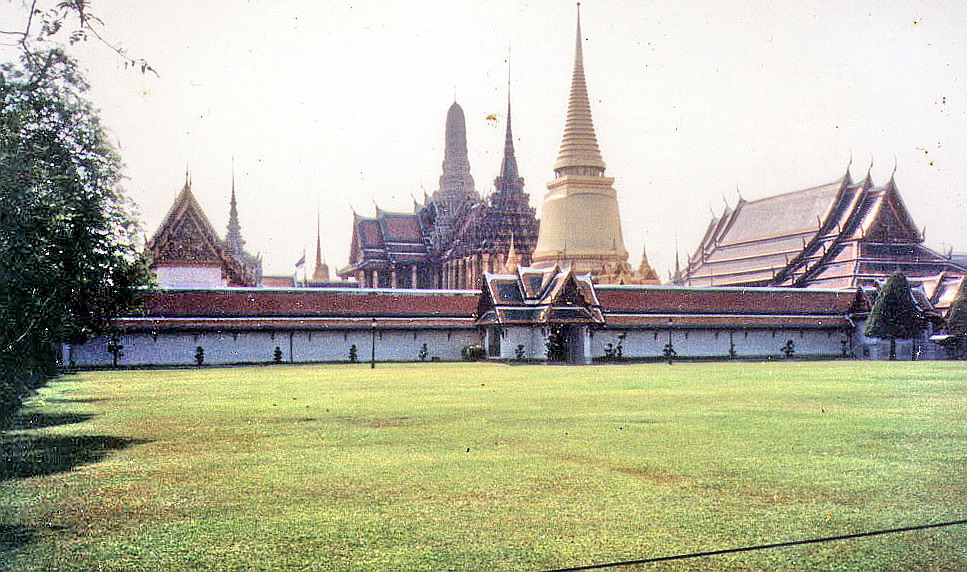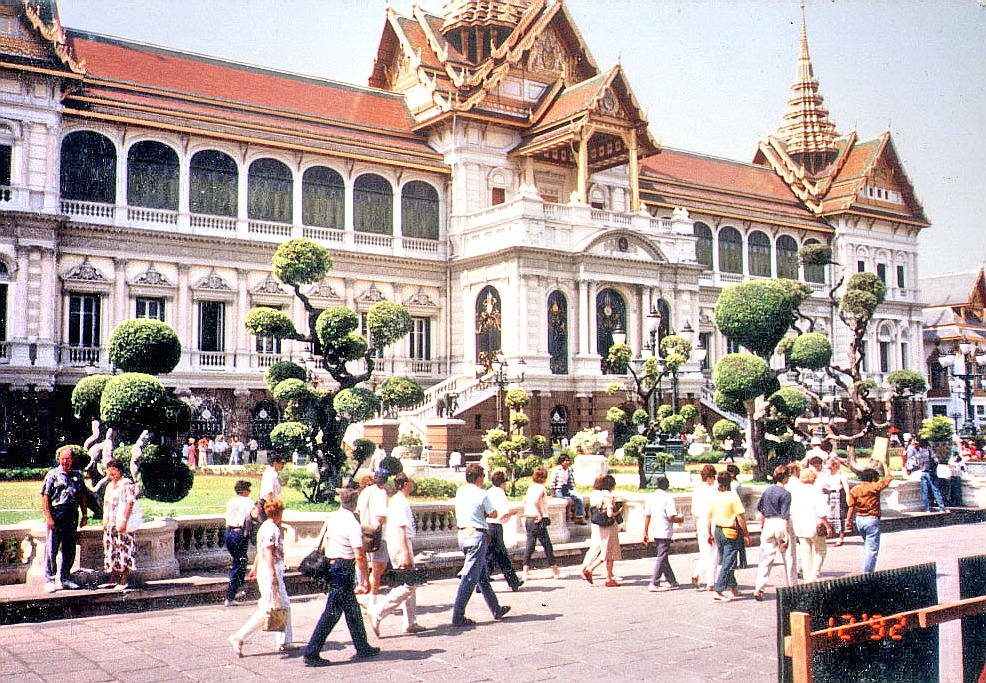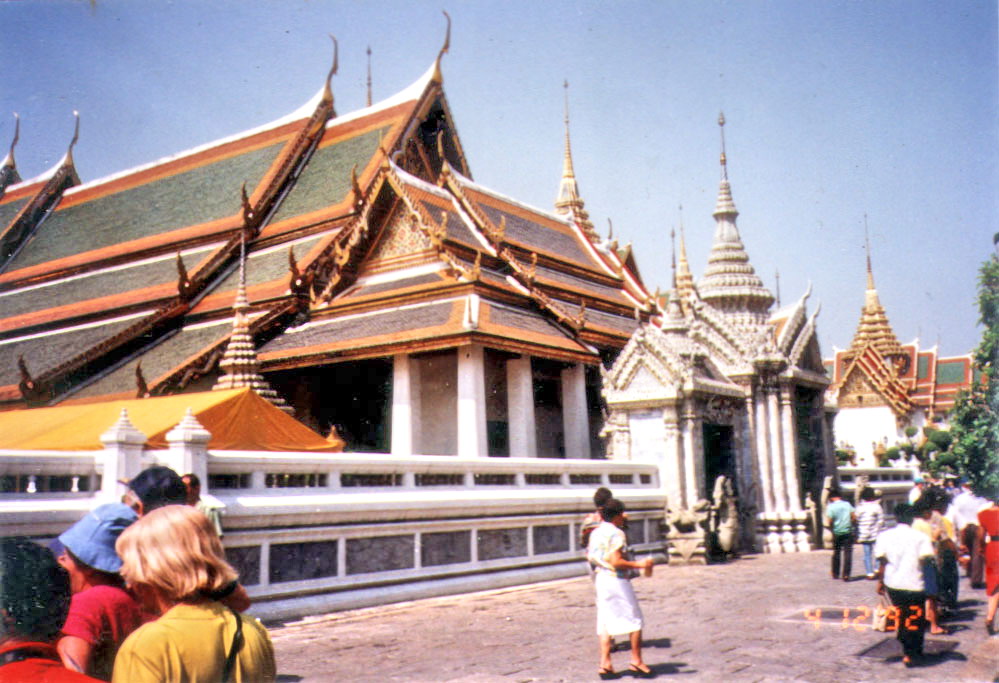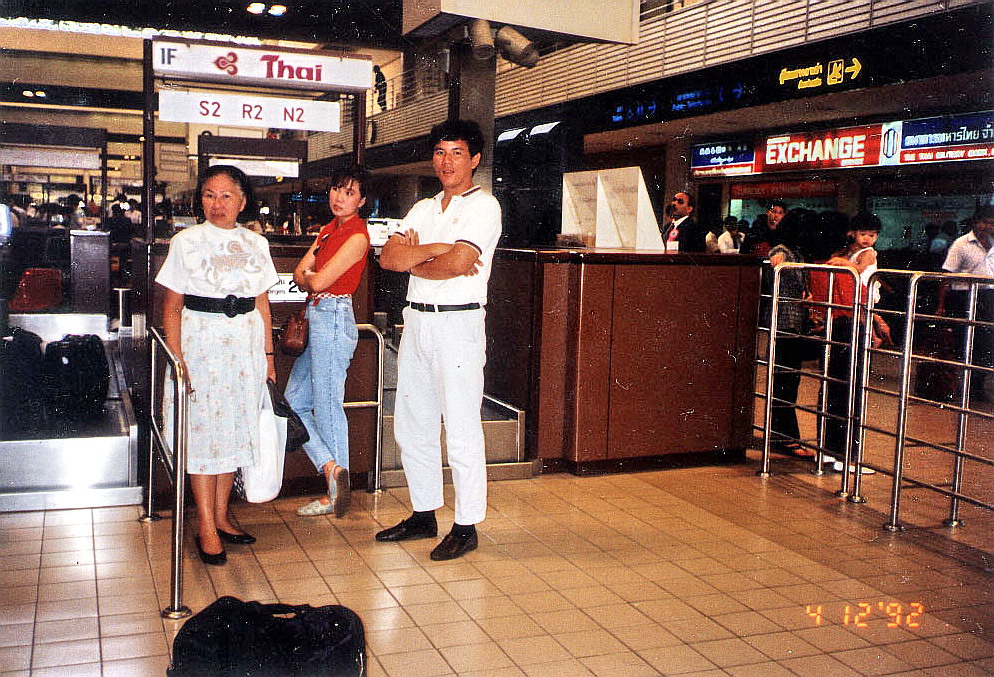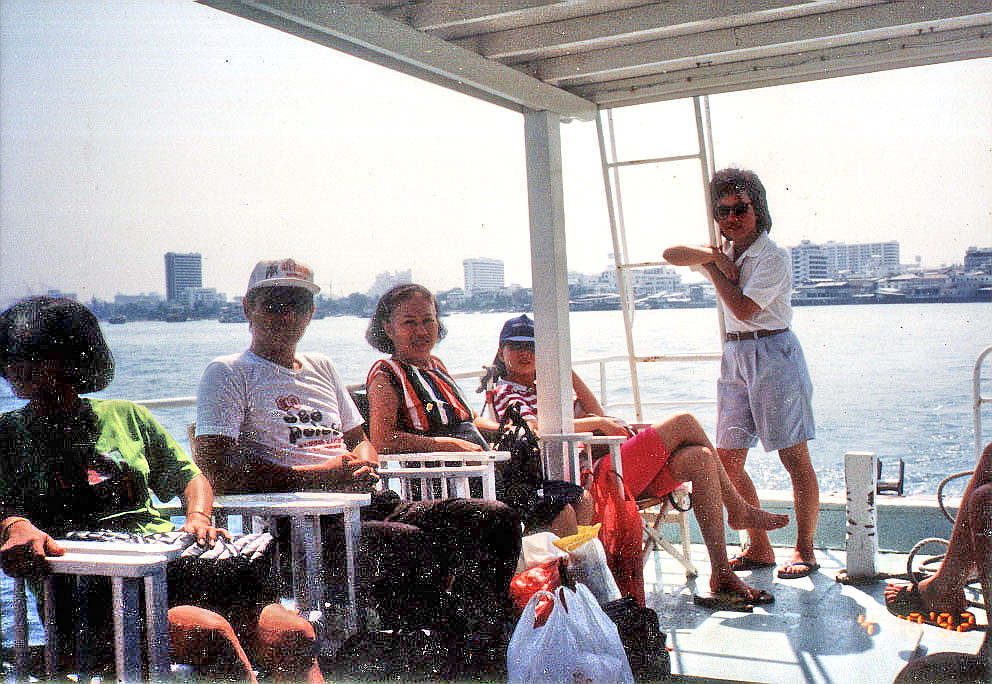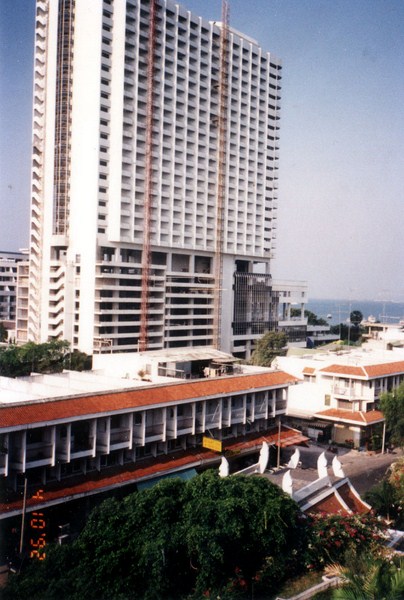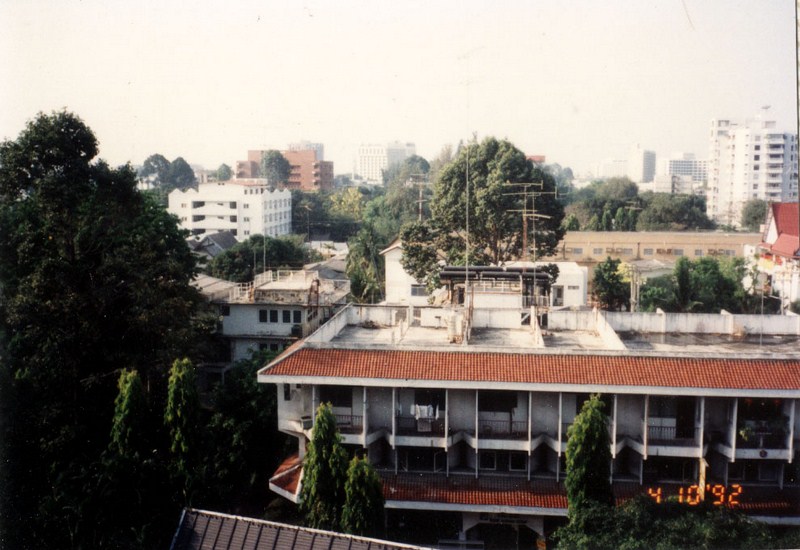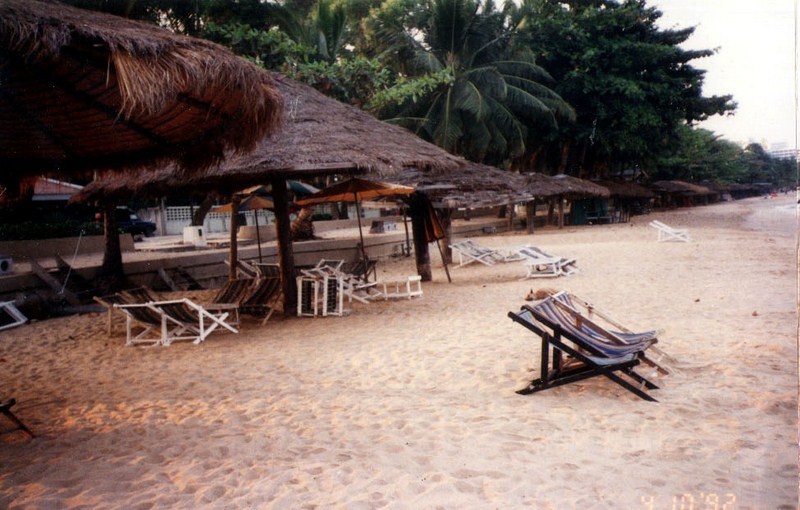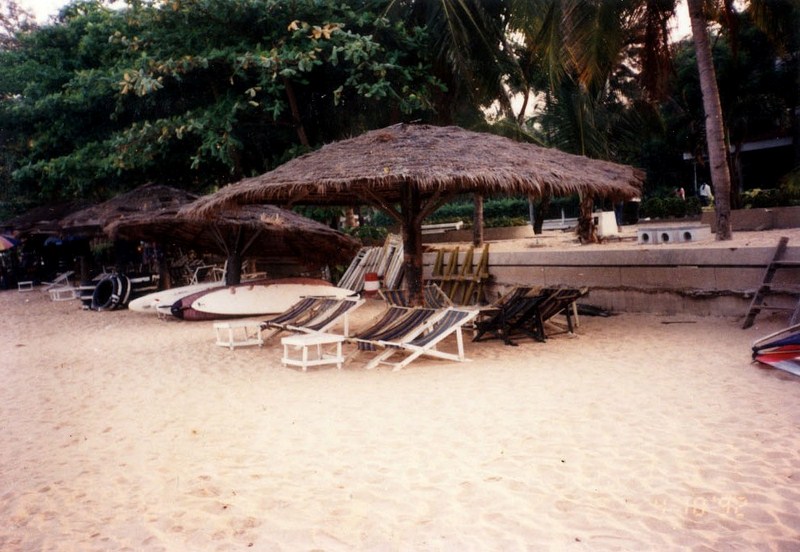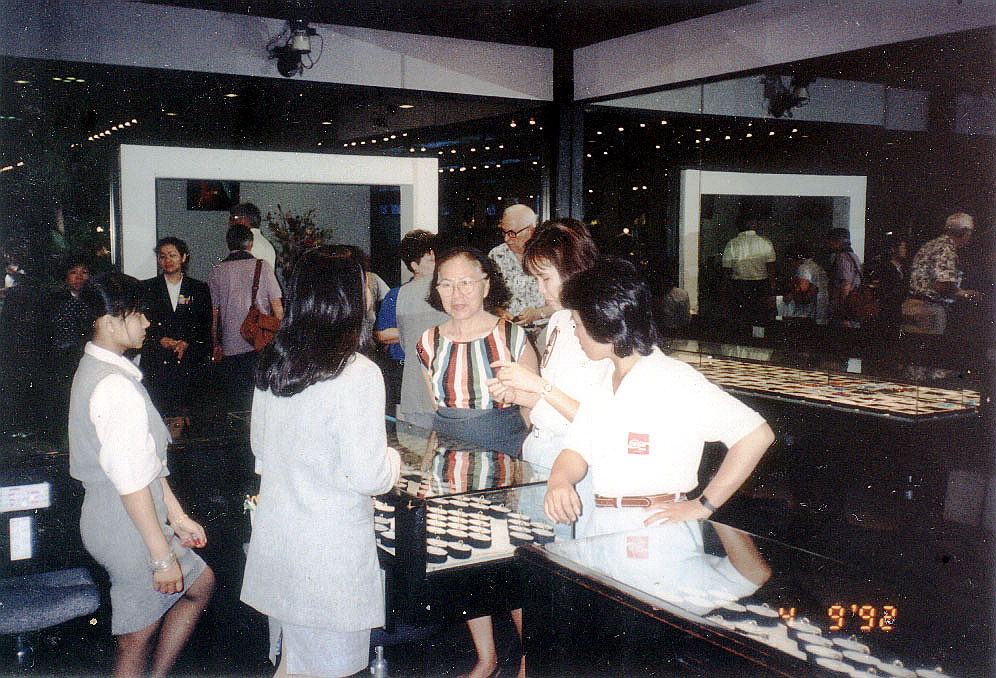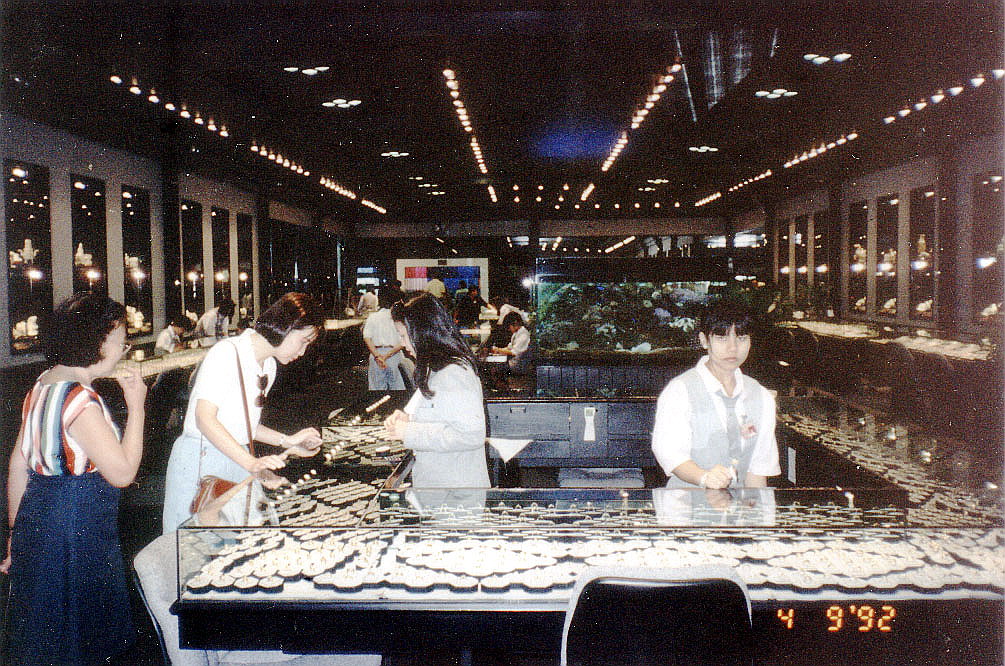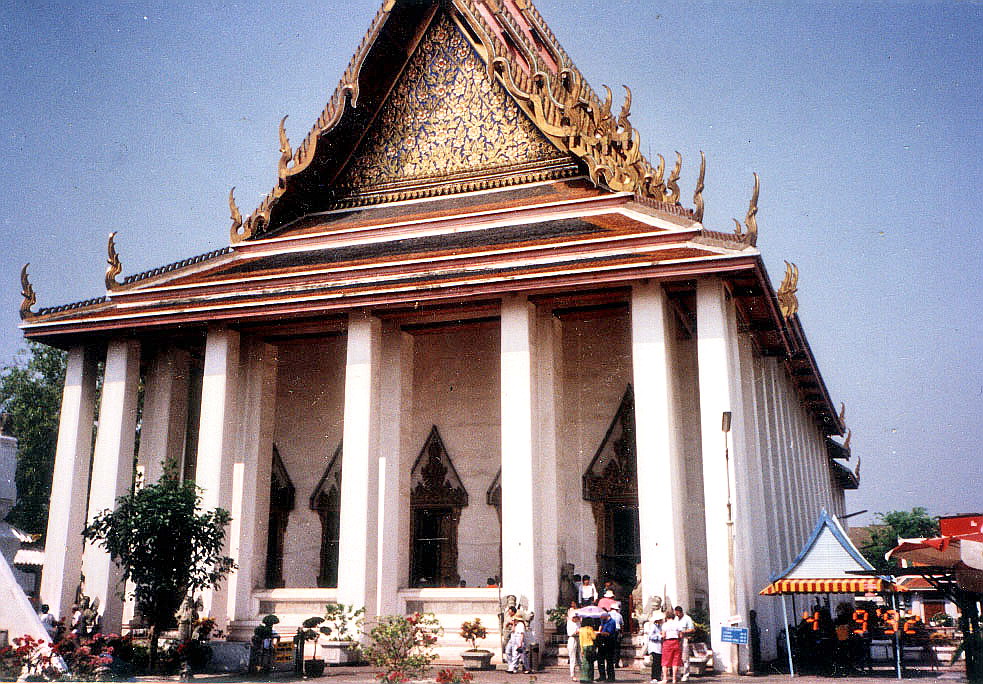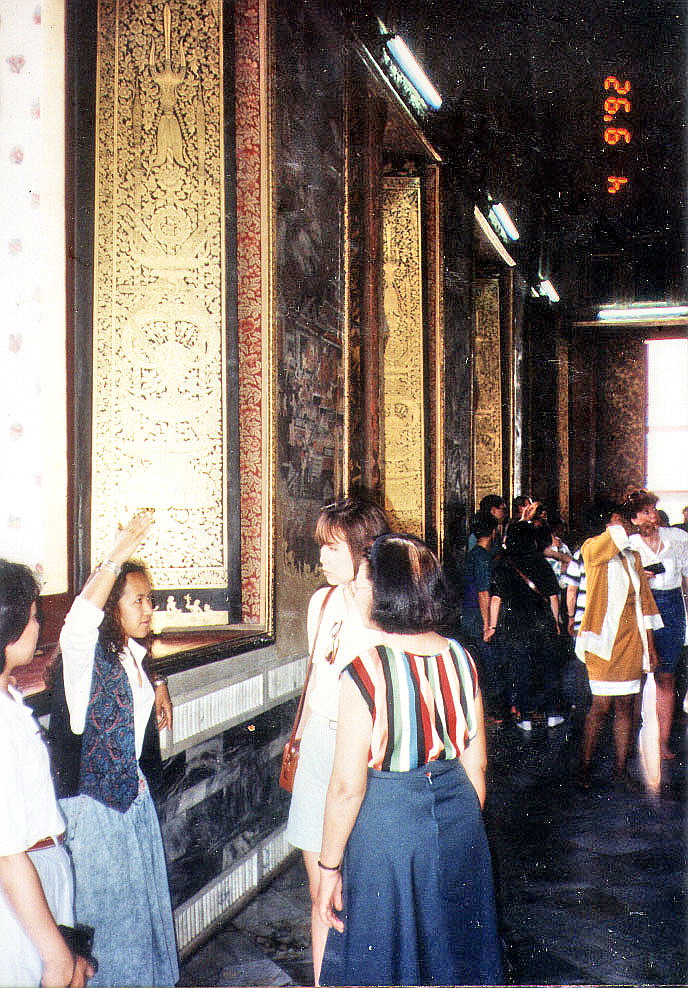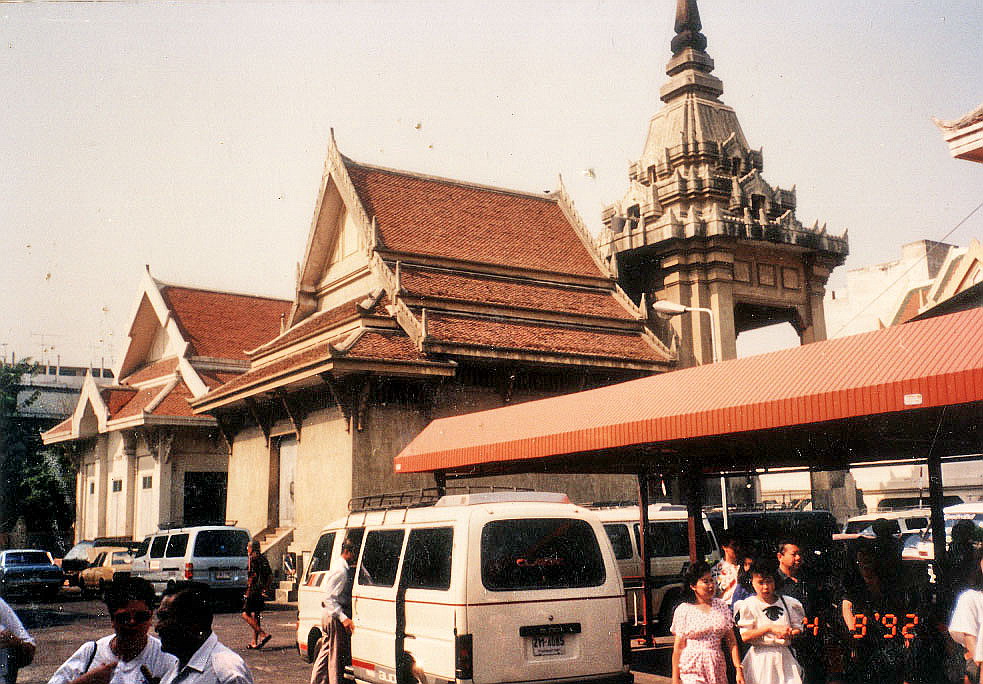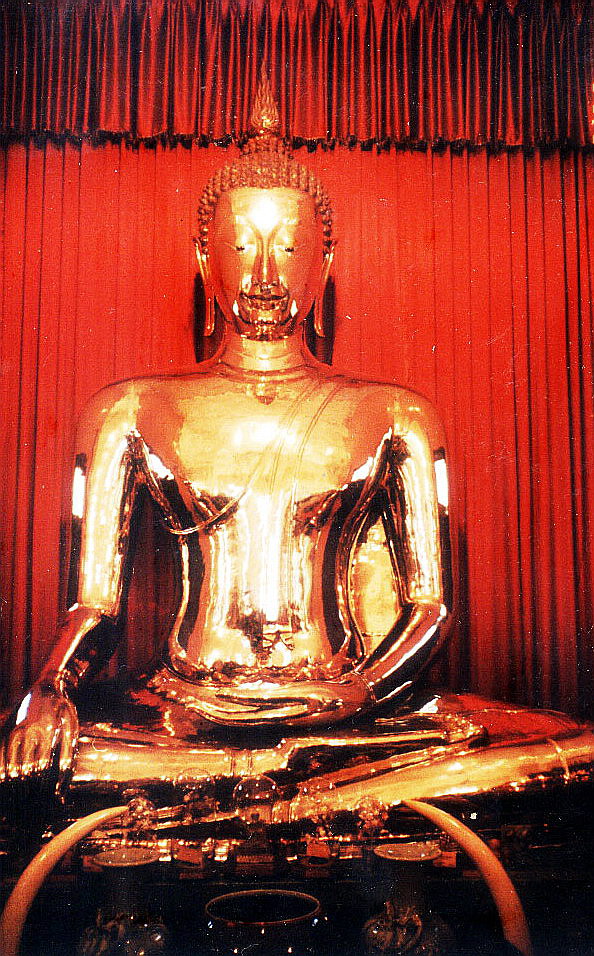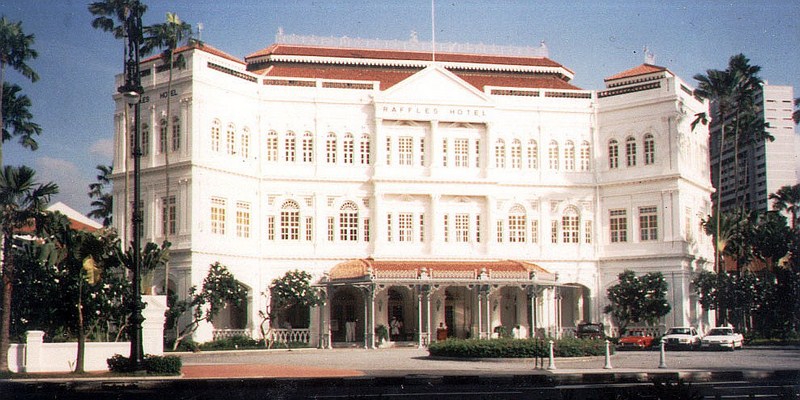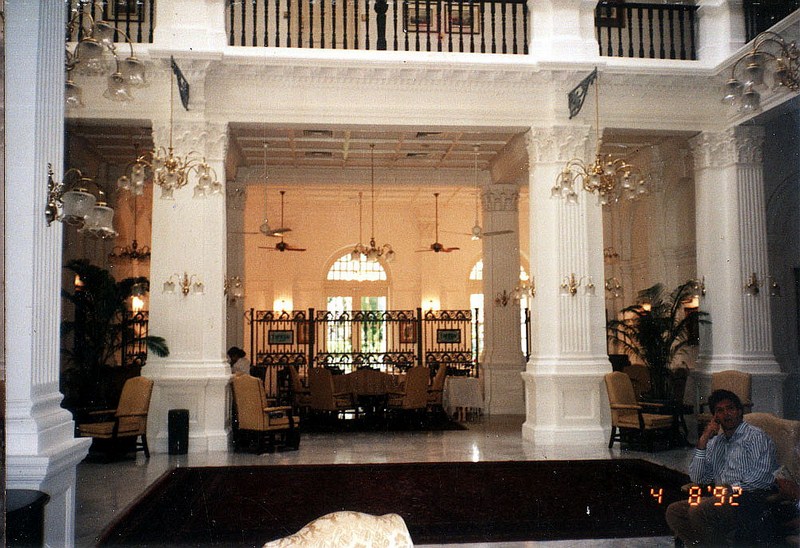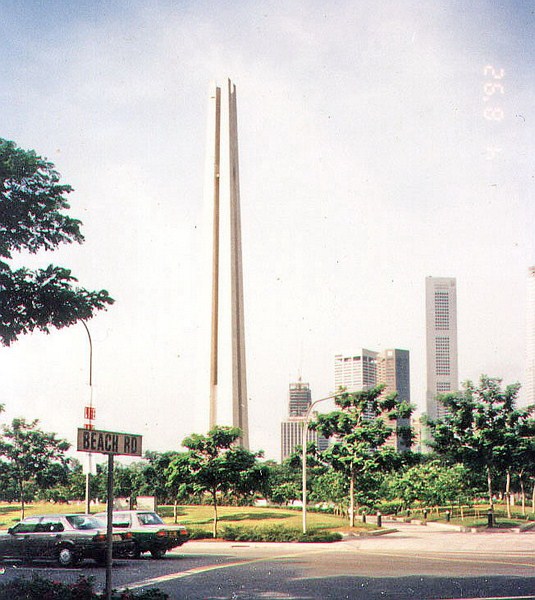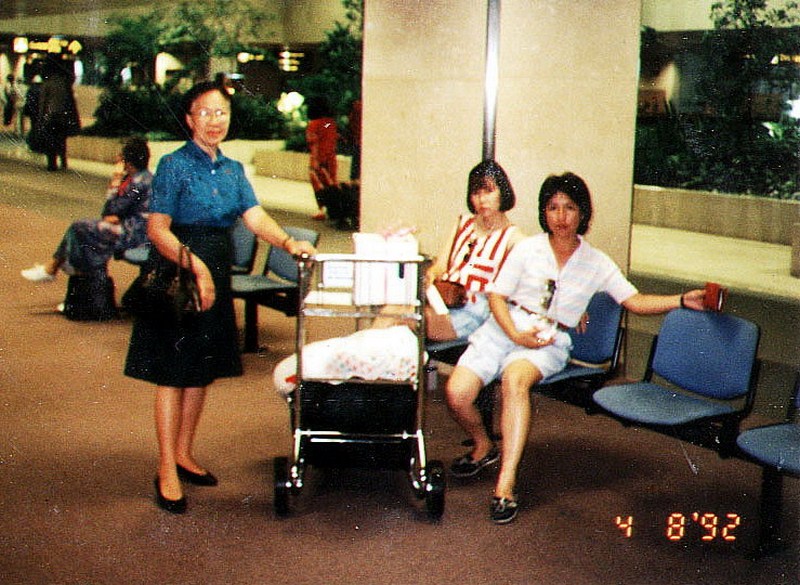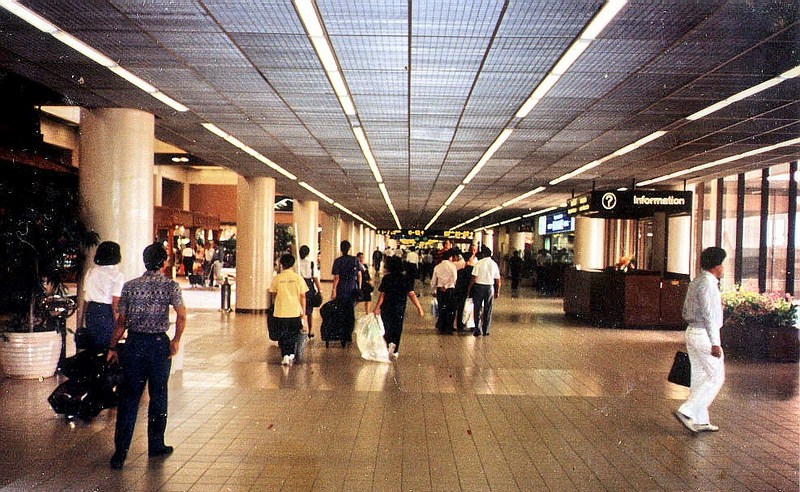We were now on my fourth and last day in Bangkok, with my whole morning free prior to my evening return to Manila, I decided to go at it alone, taking a tuktuk (the Thai equivalent of our tricycle) to get to the fabulous Grand Palace (Phra Borom Maha Ratcha Wang) and its adjoining Wat Phra Kaew. I just brought along my camera and portable tripod. Incidentally, today was also the Songkran Festival, the Thai New Year.
This complex of buildings is just walking distance from the previously visited Wat Pho and sits on the east bank of the Chao Phraya River. It being a holiday, many Thais were in the temple to pray and give food to monks. Many were also cleansingBuddha images by gently pouring water mixed with a Thai fragrance over them (believed to bring good luck and prosperity for the New Year).
Despite being in one compound, the Golden Palace and Wat Phra Kaew have a distinct difference in architectural style, except for the traditional Thai roof. Except for the Wat Phra Kaew (I had to remove my shoes before entering), the interiors of most of the buildings remain closed to the public.
Wat Phra Kaew (Chapel Royal of the Emerald Buddha), Thailand’s most important temple, houses the small (45 cm. tall), beautiful, gold-clothed and greatly revered Emerald Buddha, carved from a block of green jade (instead of emerald) and said to have been created in India in 43 BC. I wasn’t allowed to take pictures inside.
The temple’s grounds are enclosed by galleries with beautiful, vivid and colorful murals which depict the story of the Indian epic Ramayama (Ramakien in Thai) of the first reign version. The European-inspired Grand Palace, the official residence of the king of Thailand from the 18th century to the mid-20th century, is nowadays used only for occasional ceremonial purposes.
It has 2 groups of residences: the Dusit Maha Prasat (built in a style influenced by the Italian Renaissance, it has a spacious, European-style reception room decorated with galleries of portraiture) and the Phra Maha Monthian (consists of the Amarin Winitchai Audience Hall and the Paisal Taksin Hall where coronations take place).
Construction of the palace complex began in 1782, during the reign of Rama I. After the death of King Ananda Mahidolin the Baromphiman Palace, the much-revered King Bhumibol (Rama IX), the present king, moved the official royal residence to Chitralada Palace (closed to tourists).
My Grand Palace tour should have included Vimanmek Mansion along Rajavithee Road, also a former royal residence. The biggest wooden building made from golden teak in the world, it was built by King Chulalongkorn (of the “King and I” fame). Regrettably, I had to forego this visit as it was time to go and pack for home.
I returned to the hotel, joined the others in checking out of the hotel and left, via coach, for Don Muang International Airport, arriving there by noon. By 2:30 PM, we left Bangkok on a Thai Airways International flight (TG-624) back to Manila.
Golden Palace: Na Phra Lan Road, Bangkok, Thailand.

